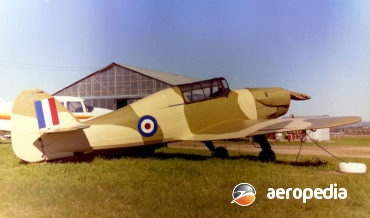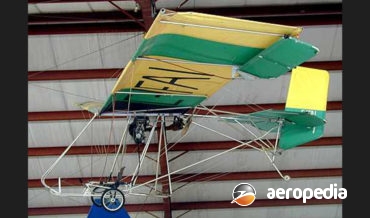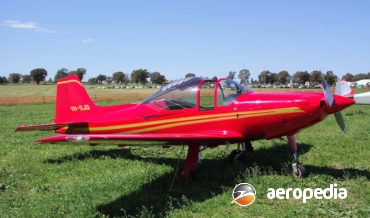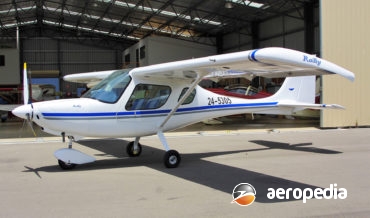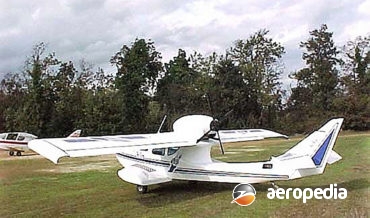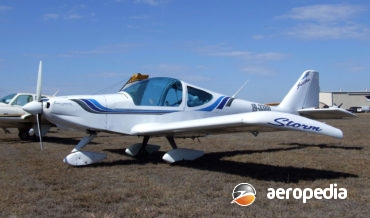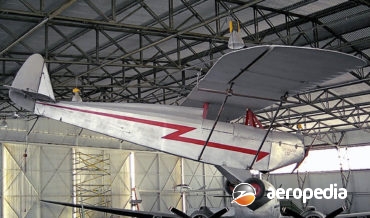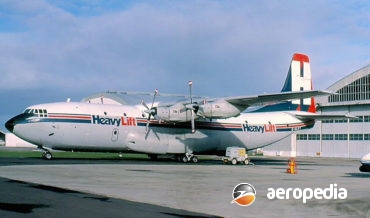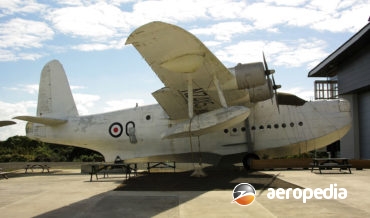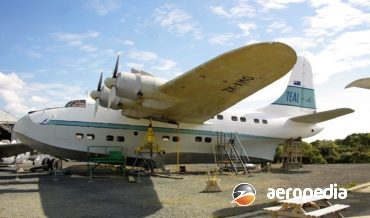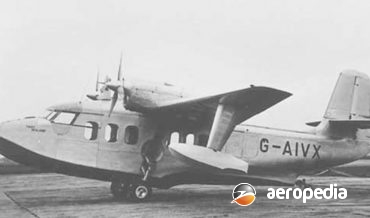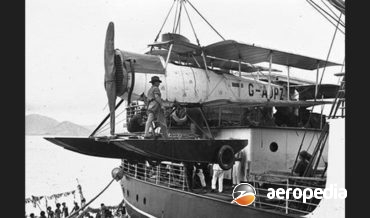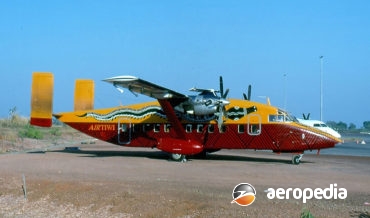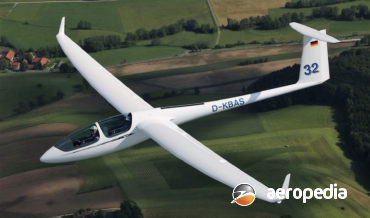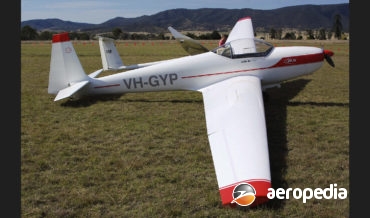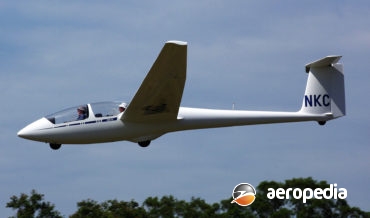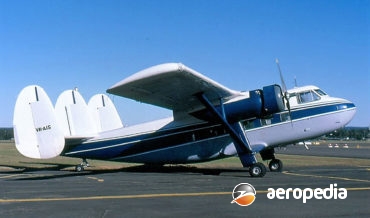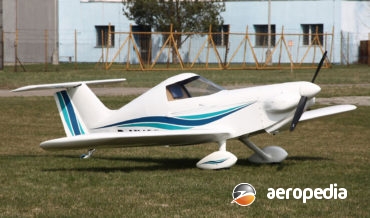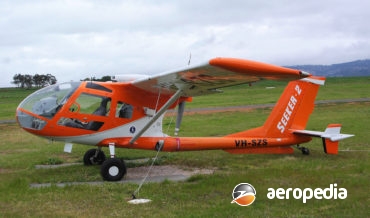David C. Eyre
The HH-1 Hawker Hurricane was designed by Fred G Sindlinger in Washington as a ⅝-scale replica of the famous Battle of Britain fighter of World War II, being aimed at representing a scale version of the Hurricane IIc.
David C. Eyre
- May 8, 2019
Designed by Captain A M Sisler in Minnesota in the USA, the prototype of the series, known as the SF-2 Whistler, received the “Outstanding Design Contribution” award at the 1973 Experimental Aircraft Association fly-in at Oshkosh in Wisconsin.
David C. Eyre
- May 8, 2019
For hundreds of years man has been interested in flight, and many have been interested in man-powered flight.
David C. Eyre
- May 8, 2019
The Skyseeker was a light aircraft produced for the minimum aircraft market and which was sold in some numbers around the world.
David C. Eyre
- May 8, 2019
The Falco series of monoplanes was originally designed by Stelio Frati, the prototype, known as the Frati F8 Falco, flying for the first time on 15 June 1955 powered by a 67-kw (90-hp) Continental C-90 engine.
David C. Eyre
- May 8, 2019
The 105 Rally series of light aircraft is one of a range of ultra-light aircraft produced in Italy by S G Aviation to meet the requirements of the world market.
David C. Eyre
- May 8, 2019
The Sea Storm is one of a series of light aircraft designed and built in Italy by S G Aviation and has been developed in two versions, a two-seater and a four seater.
David C. Eyre
- May 8, 2019
The Storm is one of a series of light aircraft designed by Giovanni Salsedo and built by S G Aviation at Sabaudia in Italy.
David C. Eyre
- May 8, 2019
The Storm 400 and 500 are part of a range of aircraft produced by SG Aviation in Italy.
David C. Eyre
- May 8, 2019
The Sheppard CS-2 was one of many light homebuilt aircraft built during the halcyon days of the 1930s when, following many record attempts,much interest was shown around the world in light aircraft.
David C. Eyre
- May 8, 2019
The Belfast C Mk 1 was a heavy-lift tactical transport built for the Royal Airforce and powered by four Rolls Royce Tyne R.Ty 12 turboprops driving four aluminium propellers 4.88 m (16 ft) in diameter.
David C. Eyre
- May 8, 2019
During the years 1946 to 1949 a fleet of converted RAF Sunderland IIIs opened up the pre-war Empire air-routes from the United Kingdom to Australia, Hong Kong, and India.
David C. Eyre
- May 8, 2019
The Scion was designed by Short Bros (Rochester and Bedford) Ltd as a light, twin-engine, cantilever monoplane for feeder-line work.
David C. Eyre
- May 8, 2019
One of the most famous commercial flying boats, the Short S.23 C Class (known as the Empire) was built by Short Brothers for Imperial Airways and Qantas, particularly for the routes from the United Kingdom to Australia.
David C. Eyre
- May 8, 2019
The Short S-25 Sunderland was a development of the commercial Short “C” Class flying-boat designed to fulfill a specification issued by the RAF for a four-engine monoplane to serve in the coastal patrol and long-range reconnaissance roles.
David C. Eyre
- May 8, 2019
In 1945 Short Bros flew a variant of the Sunderland flying-bota known as the Seaford I.
David C. Eyre
- May 8, 2019
The Sealand series was designed by Short Brothers & Harland of Belfast, Northern Ireland, as a completely new flying-boat shortly after World War II, being a five to eight seat amphibian powered by two Gipsy Queen 71 engines and a total of 25 examples was completed, ten of these serving
David C. Eyre
- May 8, 2019
The Short Sandringham series was a conversion of the Short Sunderland to meet requirements of airlines for a four-engine flying boat to carry passengers, luggage and freight. The Sandringham I (G-AGKX – ex ML788 - Himalaya) was a former BOAC Sunderland III fitted with Pegasus engines,
David C. Eyre
- May 8, 2019
Design of the Skyvan, originally known as the Short PD-36, began as a private venture in 1959 at Shorts Light Aircraft Division.
David C. Eyre
- May 8, 2019
Sometimes known as the Short Sporting Type, the Short Shrimp was a three-seat commercial biplane fitted with floats and designed and built at the company’s Rochester facility in 1919.
David C. Eyre
- May 8, 2019
The Shorts 330 was a development of the Short Skyvan freighter, a type which saw service in New Guinea in the 1960s.
David C. Eyre
- May 8, 2019
The Shorts 360 was designed basically as a larger version of the Shorts 330, but to be marketed alongside that type, to meet the needs of a number of a number of operators.
David C. Eyre
- May 8, 2019
The Skytwister light helicopter was designed in the United States by Neville Walker, a mechanical engineer, and Ronald Northwood, an electrical engineer, as an easy-to build light single-seat general purpose helicopter fitted with a Rotax engine and since then it has become available to amateur builders.
David C. Eyre
- May 8, 2019
Designed for the Italian Army by Siai-Marchetti to replace the Lycoming powered Aermacchi AM.3C, which itself had replaced the Cessna O-1 Birdog in the forward air control and liaison duties role, the prototype being first flown on 24 May 1969, this being a re-manufactured Cessna O-1 modified to take an
David C. Eyre
- May 8, 2019
The ASG 29 high performance glider was designed in Germany and placed in production by Alexander Schleicher GmbH and Co, being a development of the ASW 27 series, the prototype flying for the first time on 9 November 2005 and deliveries of machines began in 2006.
David C. Eyre
- May 8, 2019
The ASG 32 series of gliders is manufactured in Germany by Alexander Schleicher, the new model being announced by the Company in April 2013 and the prototype was flown at Poppenhausen on 31 May 2014 and subsequently entered production, deliveries commencing in 2015.
David C. Eyre
- May 8, 2019
In 2008 Alexander Schleicher announced his company was developing a new design to replace the ASH 26 series, the new model to have extended ailerons and a re-designed wing structure.
David C. Eyre
- May 8, 2019
The ASH-25 is one of a series of gliders produced by Schleicher in West Germany over the last 75-odd years, one of the first in the series being the Condor designed by Heini Dittmar, built at Wasserkuppe, and which entered production in 1932.
David C. Eyre
- May 8, 2019
The Ash 26 series of gliders is produced by Alexander Schleicher GmbH and Co in Germany and was designed by Martin Heide and more than 230 examples have been produced.
David C. Eyre
- May 8, 2019
The Ask 14 was one of a series of gliders designed by Rudolf Kaiser and built by Alexander Schleicher in Poppenhausen in Germany, the prototype (D-KAIS) flying for the first time in 1967.
David C. Eyre
- May 8, 2019
The ASK 21 is a two-seat mid-wing glider with a T-tail designed for instruction but also aimed at the market for cross-country performance and aerobatics.
David C. Eyre
- May 8, 2019
In the mid-1950s the Hughes Tool Company’s aircraft division set about designing a light, two-seat low-cost helicopter for utility work and training operations and produced the Model 269 the prototype flying for the first time on 2 October, 1956.
David C. Eyre
- May 8, 2019
Following the demise of the Beagle company in 1970 when it was heading towards putting the Bulldog into production as a trainer for the RAF, Scottish Aviation at Prestwick, Scotland, took over the development of the type, there being orders for 256 Bulldogs extant at the time, which included some
David C. Eyre
- May 8, 2019
The Twin Pioneer was a twin-engine, light, general purpose transport monoplane designed for both civil and military applications, although the majority of those built were operated by the Royal Air Force and the Malayan Air Force.
David C. Eyre
- May 8, 2019
The SD-1 is a light single-seat sporting monoplane designed by Igor Spacek and built in the Czech Republic by Spacek SRO at Hodonin.
David C. Eyre
- May 8, 2019
The Cygnet is marketed as the Sea and Sky Cygnet and was initially manufactured by Krucker Manufacturing of Sudbury in Ontario, Canada before production was moved to Fort Walton Beach in Florida and taken over by Sea and Sky.
David C. Eyre
- May 8, 2019
The SB-1 Rouseabout was a small ultra-light aircraft developed by Seabird Ultralight Aircraft at Port Vernon, QLD.
David C. Eyre
- May 8, 2019
The SB-4 Sentinel was Seabird Aviation Australia’s first foray into the fully certified field, having previously been involved in the ultra-light field, producing the SB-1 Rousabout, and a two-seat derivative known as the SB-1 Bushranger.
David C. Eyre
- May 8, 2019
The Sentinel was designed for Seabird Aviation Australia of Pialba, Queensland for eventual manufacture for domestic and export markets, the designers being Messrs C W Whitney and D Adams.
David C. Eyre
- May 8, 2019
In February 2011 the company announced an upgrade project for the Seeker, introducing a range of structural upgrades as well as changing the engine to a Lycoming IO-390-A1B6 to improve ‘hot and high’ performance, as well as the ability to mount dual alternators.
David C. Eyre
- May 8, 2019
Recent Comments
Archives
Categories
- No categories
Categories
- No categories
Latest Posts
Newsletter

